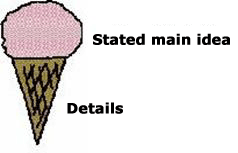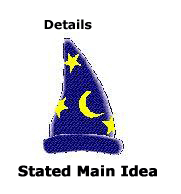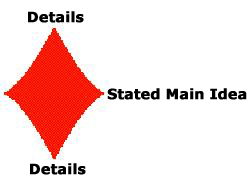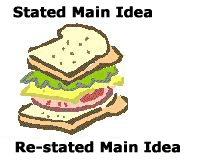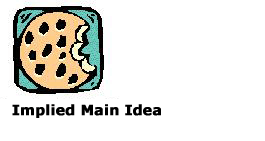
(See related pages)
If you are a visual learner, you may benefit from associating different-shaped objects with the different placements of the main idea in a paragraph. Each object represents a paragraph. The biggest (widest) part of the object shows where the main idea occurs. STATED MAIN IDEAS 1. Stated Main Idea at the Beginning of a ParagraphFor a paragraph with a stated main idea at the beginning, visualize an upside down triangle or an ice cream cone. The cone tapers–gets smaller. Think of the dwindling cone as the less important details that come after the important main idea (the ice cream!).
2. Stated Main Idea at the End of a Paragraph For a paragraph with a stated main idea at the end, visualize a triangle or a wizard's hat. The hat gets larger as you move from the top to the brim. Think of the brim as the main idea. It comes after all of the smaller details.
3. Stated Main Idea in the Middle of a Paragraph For a paragraph with a stated main idea in the middle, visualize a diamond shape. The author starts the paragraph with details, presents the important main idea, and then finishes by adding more details.
4. Main Idea at the Beginning and End of a Paragraph Although it is less common, authors sometimes state the main idea at the beginning of a paragraph. They then present several details. They conclude the paragraph by restating the main idea. The paragraph still has just one main idea since it's the same thing said two different ways. Visualize this pattern as being like a sandwich. Each slice of bread is the main idea. The details are the filler between them.
IMPLIED MAIN IDEAS As Chapter 8 explains, some paragraphs consist only of details; there is no stated main idea sentence. This means the main idea is implied. Visualize this type of paragraph as being like a chocolate chip cookie. In the cookie, no chocolate chip is more important than any other. They chips are held together because they're all part of the cookie, just as a paragraph that consists only of details is held together by the implied main idea.
Elder, J. Entryways into College Reading and Learning. Copyright © 2008 The McGraw-Hill Companies, Inc. |
